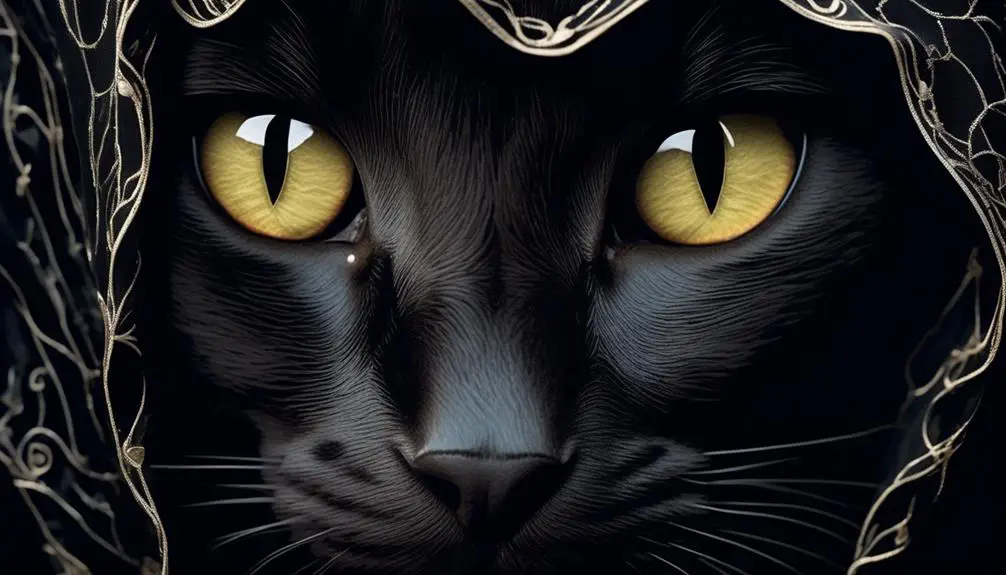The Best Fluffy Pancakes recipe you will fall in love with. Full of tips and tricks to help you make the best pancakes.

Cats, known for their enigmatic behavior, have a peculiar habit of covering their faces while sleeping, a behavior that has piqued the curiosity of cat owners and researchers alike. This intriguing feline phenomenon, shrouded in mystery, begs the question: what lies beneath the veil?
By exploring the reasons behind this face-covering behavior, we aim to unlock the secrets that cats hold dear and gain a deeper understanding of their complex nature. From the desire for comfort and security to the need for territory marking and temperature regulation, there are numerous factors at play.
So, what drives our feline friends to conceal their faces? The answer may surprise you.
Key Takeaways
- Cats cover their face when they sleep for comfort and security, as it helps them feel cozy and relaxed.
- Sleeping with their face covered can also indicate exhaustion and the need for rest.
- Cats may cover their face to mark their territory and communicate with other cats, as they have scent glands on their cheeks.
- Covering their face while sleeping helps cats regulate their body temperature, especially keeping their nose warm, which is the coldest part of their body.
Comfort and Security
Cats cover their face while sleeping to create a sense of comfort and security. This behavior is rooted in their instinctual need for a cozy and safe sleeping environment. By covering their face, cats create a physical barrier that helps them feel protected and at ease.
It provides them with a sense of privacy, shielding them from external stimuli that could disrupt their rest. While this behavior is generally harmless, there are potential health concerns that can arise from face covering behavior in cats. For example, excessive face covering may indicate a respiratory issue or discomfort.
It's important for cat owners to monitor their pet's sleeping habits and consult a veterinarian if they have any concerns about their cat's health.
Territory and Communication
When covering their face while sleeping, cats may engage in a behavior that serves as a form of territorial marking and communication with other felines. This behavior is rooted in their instinctual need to establish and maintain their territory. By rubbing their face on objects, cats release pheromones from scent glands located on their cheeks, leaving behind their unique scent and signaling ownership.
This serves as a social cue to other cats, conveying information about their presence in the area and potentially deterring intruders. Additionally, covering their face during sleep may also serve as a way for cats to communicate with other felines. While it isn't typical behavior to mark territory during sleep, it can happen as a subconscious extension of their territorial instincts.
Warmth and Temperature Regulation
During sleep, cats cover their face to regulate their body temperature and retain warmth. Cats have higher body temperatures than humans, so they need extra warmth to stay comfortable. By covering their face with their paws, cats are able to conserve body heat.
Additionally, sleeping in a ball position helps to retain heat as well. This behavior is more common in colder seasons when cats need to stay warm. The nose is usually the coldest part of a cat's body, so cats may also tuck their feet under their nose or wrap it with a paw or tail to keep it warm.
Noise Blocking and Darkness
To create a quiet and peaceful environment for sleep, cats cover their face, blocking out noise and ensuring a restful nap. This behavior is driven by their sensitivity to sound and their desire for tranquility.
Here are two reasons why noise blocking and darkness are important to cats when they sleep:
- Cats have highly sensitive hearing, and even small sounds can disturb their sleep. Burying their head or covering their ears helps create a quiet environment, allowing them to relax and recharge.
- Cats also have a preference for darkness during sleep. By burying their head or covering their face, they create a dark space that helps them feel safe and secure. This instinctual need for darkness contributes to their overall well-being and ensures a peaceful nap.
Understanding and respecting these aspects of a cat's sleep behavior will help create a conducive environment for their rest and enhance their overall comfort and happiness.
Blocking Out Light and Desire for Privacy
Do cats cover their face when they sleep to block out light and create a private space?
Cats indeed cover their face while sleeping to block out the light from the sun during their daily nap. They prefer to sleep in the dark, just like humans do, and putting their paws on their face helps them block out the light and have a better sleep.
Cats prioritize warmth over light, which is why they may sleep in the sunlight with their paws on their face. This behavior also serves as an indication that they don't want to be disturbed. It signifies their desire for privacy and their preference to be left alone while they rest.
Cats may acknowledge you with purring, but they mostly prefer not to be disturbed until they've had a good rest.
Conclusion
In conclusion, the act of cats covering their faces while sleeping serves various purposes that contribute to their overall comfort and sense of security. This behavior not only helps them regulate their body temperature but also allows them to mark their territory and communicate their presence to other cats.
Furthermore, by blocking out noise and darkness, cats are able to create a peaceful and private sleep environment. Interestingly, a study found that approximately 75% of cats exhibit this face-covering behavior, highlighting its widespread prevalence among feline companions.








